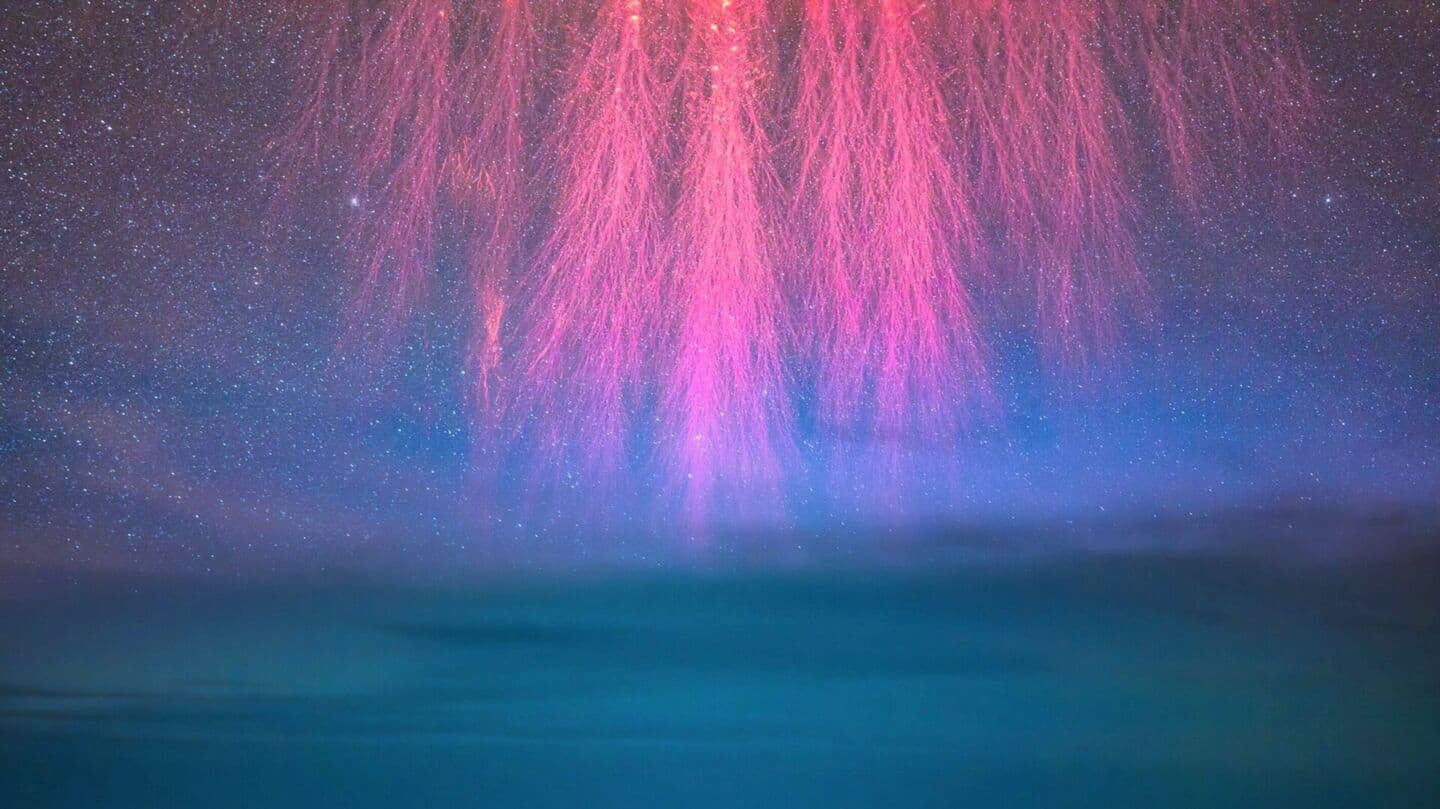
Mysterious glowing 'red sprites' light up Himalayan sky; what're they
What's the story
The peaceful night sky over Tibet was suddenly lit up by glowing red sprites in May 2022. Not ordinary lightning bolts, but the rare atmospheric phenomenon that left both astrophotographers and scientists in awe. On May 19, astrophotographers Angel An and Shuchang Dong, who had set up camp near Pumoyongcuo Lake to capture unique celestial happenings, saw over 100 red sprites flickering in the night sky. This hitherto unexplained phenomenon's cause has now been unobscured by a team of scientists.
Unique patterns
The phenomenon of red sprites
The red sprites didn't just appear in isolation; some even expanded into secondary jets, creating new patterns. A unique feature was also seen—green airglow at the base of the ionosphere, later dubbed "ghost sprites." These glowing events soon grabbed the attention of news agencies, scientists, and weather experts worldwide for their significance, hinting toward powerful atmospheric forces at play.
Lightning triggers
Research team identifies cause of red sprites
Now, a team led by Professor Gaopeng Lu from the University of Science and Technology of China has found the reason for these giant sprites. Scientists discovered that the sprites were triggered by "high-peak current" positive cloud-to-ground lightning strikes within a huge convective system spanning over 200,000 sq km. "Our analysis showed sprites linked to high-peak current lightning discharges," Professor Lu said. Lightning from a large storm system above the Himalayas proved thunderstorms here produce strong upper-atmospheric discharges.
Innovative approach
New method developed to study red sprites
A major obstacle for the researchers was the absence of accurate timestamps for when the sprites appeared. To bypass the problem, they came up with a novel method: using satellite data and the position of stars, they found out when each sprite appeared. They found the parent storm was a mesoscale convective system from India to Tibet, in stratiform precipitation areas where rain clouds spread widely.
New insights
Himalayas among top sprite-producing regions
This storm generated more red sprites in a single night than any other recorded in South Asia, placing the Himalayas among the world's top sprite-generating regions. The study, published in Advances in Atmospheric Sciences, says mountain storms can pump energy into the upper atmosphere. These high-altitude electrical bursts could influence atmospheric chemistry and affect energy and particle transfer between sky layers.